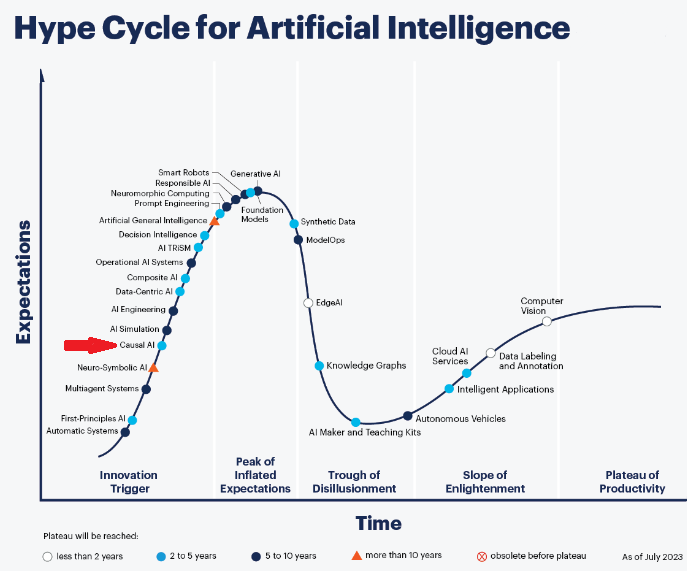Relying on predictive AI models in diverse decision-making areas risks catastrophic consequences because of the fact that they usually consider correlation for causation. Therefore, decision-makers must adopt another approach, causal AI, which can help in identifying the relationship between effect and cause precisely. Causality is now considered one of the most important missing elements that is needed to enable genuine progress in the AI field.
Causal AI understands cause and effect
For quite some time, domain experts have already been saying to enable machines with the capability of reasoning about the effects and causes. Big brand names like Google, Microsoft, Facebook, Uber, and Amazon are heavily investing in causal AI, so the research in causality has also accelerated.

Gartner, which is the leading tech analysis firm, also listed causal AI among the 25 evolving technologies that have the potential to transform business practices. Now it seems like a race in industry to leverage the exceptional advantages of this tech by adopting it earlier, but for this to happen, first building mature causal AI is essential.
For real intelligence, a necessary requirement is giving priority to cause and effect. This is the problem that predictive AI systems lack, and experts are trying to solve it with causal AI.
We humans are smarter than data because we understand cause and effect, but data does not. We use our ability of reasoning through our causal knowledge to predict how a certain action will impact a matter, so we make strategies and plans accordingly. We can imagine unwanted or different results from our expected results by depending on our causal reasoning ability. This is human competence to determine why something ended up as it did. So, the AI that knows cause and effect can also have this ability, which is often very powerful.
Domain knowledge onboard
One of the key benefits of causal AI is utilizing domain knowledge, which can be obtained from experts in the field and incorporated into the system process. in this way, programmers can define some relationships and restrict the model to honor the correlation. This ability brings domain expertise on board with machine learning.

Spotting the underlying factors is not the only benefit of using casual AI; it also makes it possible to design processes that can change the outcomes by using the algorithms of casual AI to ask questions for reasoning.
Let’s say you want to evaluate a training program for instructors to improve their competency. How much should be expected from a trainee to improve his scores? Or, for example, a manufacturing plant supervisor knows that when the heat in chamber X goes up, the pressure in chamber Y also increases. So, this human-gained knowledge can be embedded into the AI and make sure that the system always respects these criteria.
Current AI systems are not aligned with human values in a smart way. Causal AI is the pinnacle of explainable artificial intelligence and the fairness of AI systems. Systems based on causality deliver better performance and also explainability of the process, whereas conventional AI focuses on certain expects of accuracy and ignores transparency. Knowing the answers to complex what-if questions helps us understand how the real world operates and it allows us to make the right decisions for better outcomes.
The original story can be seen here.





